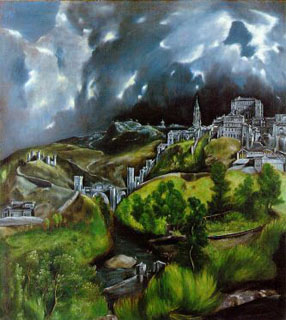“Be inspired,” exhort the posters advertising the National Gallery’s new exhibition of paintings by El Greco. “Cezanne was. Picasso was. Jackson Pollock was.” It is a misleading and unnecessary sales pitch, partly because El Greco simply does not need the boost of co-billing with the likes of Picasso, but principally because the notion that he was a modern avant la lettre is no more than a superficially attractive banality. El Greco was a great master who worked at the confluence of vividly differing traditions. The National Gallery exhibition is a once-in-a-lifetime experience because it gathers together an unprecedentedly large group of his paintings (admittedly not quite as many as were gathered for its recent showing at the Metropolitan Museum in New York, but in the circumstances that is the most minor of cavils); and thus charts, in an exhilarating sequence of beautifully hung galleries, the evolution – ignition might be a better way of expressing it – of his amazing, flame-like genius.
El Greco was born Domenikos Theotokopoulos on the island of Crete in 1541. He trained as a painter of gold-ground icons, a selection of which introduce the exhibition. Prominent among them is a glimmeringly delicate Dormition of the Virgin, painted in the mid-1560s, which demonstrates the extent to which the young El Greco mastered the principles of late Byzantine art. No attempt is made at precise empirical observation. The attenuated figure of the Virgin, stretched out on a bier, eyes peacefully closed, is an archetype of sanctity rather than a flesh-and-blood presence. The apostles cluster around her, their own figures elongated and stiffly two-dimensional, the highlights on their drapery serving not to define form but to create crystalline structures of pure radiance and thus suggest the illumination of the spirit. There is little sense of space in...

El Greco at the National Gallery 2004
15-02-2004

